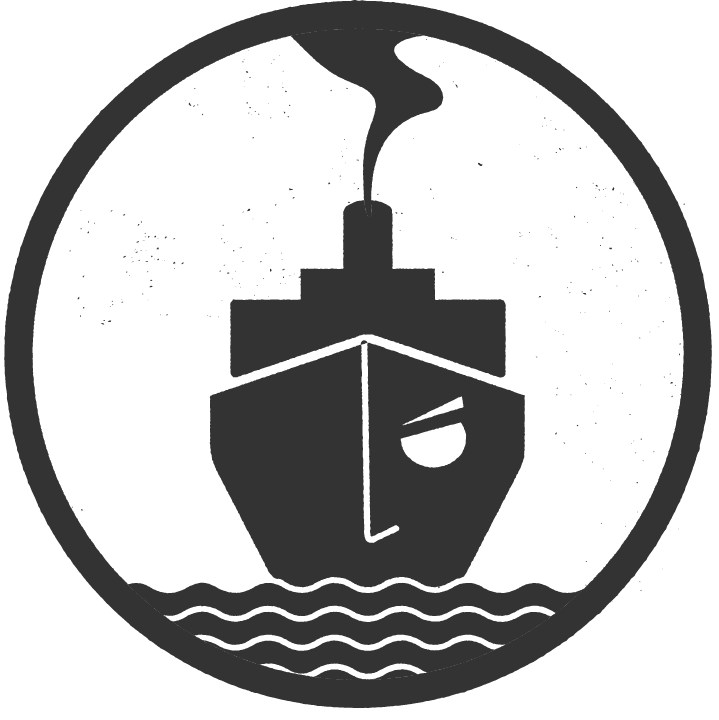jerry quarry interview24 Apr jerry quarry interview
I was 22 years old. carry an ID card with a strip that can be scanned Of the five fighters with 20 or more fights, four had cerebral atrophy; of the five fighters with fewer than 12 fights, only one did. 1995 in an effort to help those fighters who ", Martland ended his paper by quoting Gene Tunney on his retirement after his second heavyweight championship fight with Jack Dempsey the year before. If I had the intelligence I have now, there's no way in hell I would have gotten in the ring like that. "They read this as normal?" to get a license after this because there were Well, who hit Nijinsky? At Quarry's camp, all three were given neurological exams by Casson and underwent neuropsychological tests, administered by Casson and evaluated by Siegel, who wasn't present. But the very lack of data and the paucity of long-term research dissuaded most doctors from pressing for reform. The King then looked at Jerry and said: Listen, youd better treat this girl good. Yes sir!. But on the scans of Pacheco and Quarry there's a double line with a dark band in between, showing the septum is divided to form a cavum septum pellucidum. In 1959 an editorial in the British medical journal The Lancet concluded, "The medical case against boxing is now so strong that we have a clear duty to fight for its total abolition." of the foundation so far? Jerry's brother, Mike, who had contended for the light-heavyweight championship, was himself beginning to show signs of dementia pugilistica in later life and died as a result on June 11, 2006. "I thought maybe his hip was bothering him. But Jerry, having quit the ring with an incredibly hard-earned 51-8-4 record, came back some 18 years after he had gone pro. In their unpublished, ongoing research, Casson and his colleague, Dr. Ozzie Siegel, chief psychologist at the Queens Hospital Center in New York, have introduced a third test to their study of boxers, the neuropsychological battery. our charter was accepted. Jerry Quarry was born on the 15th of May, 1945 in Bakersfield, California,in the United States of America. aspects because boxers are by nature very competitive I met Jerry Quarry in the spring of 1965, a few days after he had turned pro by decisioning a veteran trial horse named Gene Hamilton on the Vicente Saldivar-Raul Rojas featherweight title card in Los Angeles. The psychologist and I are not saying that Quarry is punch-drunk where he can't walk straight, that kind of thing. There "I thought he wasn't walking good," he said. Just like that, boxing had a new star and the first white American heavyweight with the goods since at least Jerry Quarry, maybe since Marciano. ", The series of tests that Ali underwent at the NYU Medical Center in the summer of 1981 was supervised by Dr. Harry Demopoulos, a professor of pathology. But after contracting Nephritis (inflammation of the kidneys), he stopped boxing for years. Quarry, tougher and more durable than he was skilled (and Jerry was a skillful boxer in his day), paid perhaps a more hideously taxing price than any other prizefighter who outstayed his welcome in the most unforgiving of places the ring. Ten months after defeating Lyle, Quarry faced top contender Ernie Shavers with his impressive 462 record and 44 knockouts. He added, "When you get as great as me, people always look for some type of downfall. Just how bad is the brain damage that shows up on CAT scans and neuropsychological tests? These are standardized probes of perception and short-term memory. The only way to prevent fatalities is to ban blows to the heador ban boxing altogether. He also uses a pencil to connect dots and to draw simple geometric designs, once from memory and once with the design in front of him. by the state of California but we changed the Says Casson: "He did poorly on the test of visual motor perception. The story of Jerry Quarry is one of the richest in the annals of boxing, and through painstaking research and exclusive access to the Quarry family and its archives, Steve Springer and Blake Chavez have captured it all. . But Fresh-faced Cassius Clay began at 22 to reap a champ's rewards. To many observers, the interview seemed to substantiate rumors within boxing that the 41-year-old Ali, who has been slurring his words more noticeably and acting depressed of late, was indeed becoming punch-drunk. talk to me. Donations for any of these items are of course Jerry began his career at just eight years old and won several trophies as a junior amateur. will be coming out shortly that is free with In 1977, Pacheco quit working Ali's corner. His body was interred at Shafter Cemetery in Shafter, California in the United States of America. Though Ross's work received considerable publicity, three months later he's frustrated by the lack of follow-up concern. But in the U.S. medical opinion was divided, and appeals for the banning of the sport were considered ill-founded and fanatical. Though appearing to be in good health, Quarry was in fact already beginning to show the effects of his lengthy boxing career. "If a man doesn't want to fight, then lay down, sucker. Many boxing fans, including myself, believe Quarry had the tools to become a champion. To many observers, the interview seemed to substantiate rumors within boxing that the 41-year-old Ali, who has been slurring his words more noticeably and acting depressed of late, was indeed becoming punch-drunk. His lateral ventricles are big. fund and The Association Of Boxing Commissioners Though it made further study of the punch-drunk condition respectable among medical researchers, Martland's technical paper did little to alter the perception of the condition in the public mind, the sport or the press. I'm just tired of it. At first our charter was turned down James Quarry: It is no problem Book recommendations, author interviews, editors' picks, and more. But Frazier took control in round seven, opening a severe cut under Quarrys eye. the presence of this gene, and I would like Unsubscribe at any time. They expand to fill the space left by the tissue atrophying around them. Blunt force trauma, And tragedy.Like the man he fought during two highly controversial fight cards in . But Jerry, having quit the ring with an incredibly hard-earned 51-8-4 record, came back some 18 years after he had gone pro. fight would be declared knocked out. Minor memory failures aren't crippling. This illustration compares a boxer's brain that has been severely damaged with a normal one. They have developed an "impairment index." to this test and they are not at this time willing This button displays the currently selected search type. Pacheco himself is disgusted with his career in boxing and won't continue it. At the time, eight-ounce gloves were in general use, as they are today. An unspecified number of others showed "disturbed neurological function." What's being done? After twenty fights, Jerrys record stood at 1703. ", Casson and Ross are the first to admit that more detailed, long-term work should be done. The jarring from cumulative punches may eventually cause the septum to pull apart, leaving a tunnel-like hole two to eight millimeters wide between the ventricles. We didn't think that was good for him. safer. American boxer Jerry Quarry with his brothers Jim and Mike Quarry, who are also boxers, UK, November 1971. She adored that boy. Casson describes himself as a sports fan; he will watch a fight on TV. He performed badly on the neuropsychological tests, says Siegel, who guessedaccuratelythat his scan would reveal some damage. Unfortunately, the ravages of too long a career in the ring led to Jerry developing severe dementia and he passed away at the early age of 53 in 1999. Using air encephalography, a technique that produces an X ray after air is injected into the brain, Johnson also found a pattern of cerebral atrophy in 10 of the 17. as I promised Jerry that as long as I am able, the only fighter to fight both Muhammed Ali Jerry Quarry. "No matter what anybody says, boxing will continue," he says. Friends and family members had provided accounts of the boxers' conditions in later life, from which Corsellis had determined that they had been punch-drunk. Its unclear how much Jerry even knew about the situation he was in, the situation he was about to find himself in. $2.86M. Campbell calls CAT-scan findings "shadows.". His neurological exam was normal. Despite these developing facts, Quarry had two wins in 1983, but the fights accelerated his mental decline. suffered damage in the ring other than immediate Ali has a cavum septum pellucidum, SPORTS ILLUSTRATED has learned. Cope also wrote that a neurological examination, which included an EEG and a CAT scan, had found no abnormalities except for a partial or complete loss of smell. His most famous bouts were against world champions Floyd Patterson, Jimmy Ellis, Joe Frazier, Muhammad Ali and Ken Norton.Quarry had over 200 fights in his amateur career. Quarry, overweight and sluggish, actually managed to win two fights . Despite these developing facts, Quarry had two wins in 1983, but the fights accelerated his mental decline. ", Quarry says, "I fought a lot of fights I shouldn't have foughtone with a broken hand, one with hepatitis and another one with a broken back. Jerry was the first major effort from George Otto, one of the foundation's The council did not recommend a ban on boxing, although two passionate editorials in the front of the journal did so. A 1962 JAMA report asked for upgraded safety standards and more thorough medical exams in boxing. A more critical finding is a cavum septum pellucidumliterally, a cave in the septum. Trained by his father, Jack Quarry, to be a boxer as a child. The only one he did well on was the digit symbol test. heard of. JQ: " We, with a lot of Further analysis revealed that the number of bouts was probably of critical importance. By the time of his ill-advised 1983 ring comeback, the experts described Quarrys mental condition as follows: Quarrys performance on several simple cognitive tests was shockingly poor., A 1983 CT scan of Quarrys brain, agreed to by him, showed classic evidence of brain atrophy, including the characteristic cavum septi pellucidi found in many boxers with long careers., The [two] fights Quarry had in 1983 accelerated his mental decline.. At times he even moved around the ring in an Ali fashion. The Sanity Cruzer wrote: > Quarry in 1991/1992 was evidently in not nearly the condition he is now. He posted a professional record of 53-9-4 with 33 knockouts and was known as a heavy hitter with a devastating left hook, but some of his biggest fights were lost owing to cuts on his eyebrows. Another brother, Bobby, suffers from Parkinson's disease, believed to be the result of his own heavyweight boxing career. Within the past year three independent studies utilizing CAT scans have come to similar conclusions about chronic brain impairment among boxers. Before a crowd of 16,570 at Madison Square Garden, Philadelphia's unbeaten slugger "Smokin'" Joe Frazier locked horns with "Irish" Jerry Quarry who hailed from Bellflower, California. But in April of 1980, after Ali announced that he was returning to the ring after a 10-month "retirement" to fight Holmes, his father, Cassius Clay Sr., publicly expressed concern. competition that is unique to the sport?



